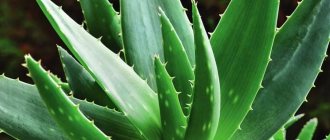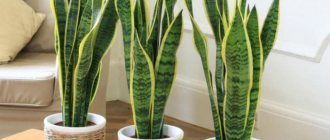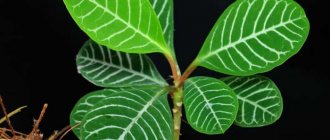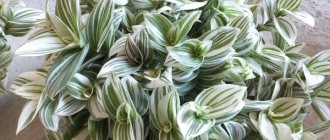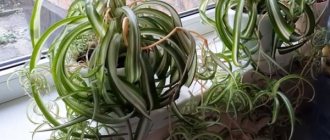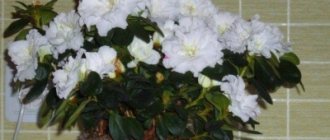Field chamomile is considered one of the most popular crops. She looks very attractive. In addition, the plant is often used for medicinal purposes. Its flowers and stems contain many valuable components. Therefore, the flower can be used to treat a variety of diseases.
Field chamomile looks very decorative and contains many valuable substances.
Methods of use for different conditions
The options for using chamomile differ depending on the purpose of using this medicinal herb.
Tea for the gastrointestinal tract
For inflammation in the digestive system, doctors advise drinking chamomile tea regularly; it is inexpensive in the pharmacy. Its preparation is no different from brewing a regular drink. A teaspoon of dry raw material is poured into a glass of hot water and left under the lid for 10 minutes.
To normalize the state of the gastrointestinal tract, take it warm. You are allowed to drink no more than 3 glasses per day.
Infusion for colds
To alleviate the patient's condition and activate the immune system, doctors advise drinking chamomile infusion. It is prepared like this: 4 tablespoons of dried flowers are placed in a thermos, brewed with a glass of boiling water, left to infuse for 3 hours, then filtered.
Take the medicine 50 ml no more than 4 times a day.
Treatment of gynecological pathologies
In the treatment of female diseases, chamomile is used more often by douching. For the procedure, prepare a solution, mix a teaspoon of crushed and dried flowers with a glass of boiling water, then leave for half an hour under the lid, allow to cool and filter.
The treatment session is carried out every day before going to bed at night. The duration of treatment is 7 days. The product is slowly injected into the vagina using a syringe. The solution must be warm.
Such procedures are indicated for vaginosis, thrush, inflammation, and erosion.
Fighting skin problems
For dry skin, the presence of pimples and acne, it is recommended to use chamomile essential oil. You can buy it at the pharmacy or prepare it yourself.
The recipe is simple: dry inflorescences are combined with olive oil in equal quantities. Place the container with the mixture in a warm place, but protected from exposure to the sun, to infuse for a month. After this time, the product is filtered, poured into a dark bottle and stored in the refrigerator.
Problem areas of the face and body are treated with oil daily.
A decoction is used to wash acne, pimples, and redness. To prepare it, pour 2 tablespoons of chamomile into a glass of hot water, put on low heat for half an hour, then filter. The product is stored for no more than 2 days.
The tincture is excellent against freckles and age spots. 2 tablespoons of dried flowers are poured into 300 ml of vodka and allowed to brew for a week. Be sure to store in the refrigerator. To get rid of pigmentation, wipe problem areas twice a day.
Also, for the purpose of whitening, 5 drops of the tincture described above are combined with the juice of one lemon and chopped parsley. The prepared product is used to treat areas where there are freckles or age spots. After 30 minutes, wash with warm water.
Use for hair problems
The following effective masks are provided for curls:
- To strengthen. 3 tablespoons of chamomile are brewed with 250 ml of just boiled water, left to brew for 45 minutes, then filtered. Then add 100 g of lanolin, warm the mixture a little and apply to the hair.
- Anti-fall. Mix chamomile, nettle and sage, taking a tablespoon of each, pour 150 ml of boiling water. Leave for half an hour and strain. The finished product is rubbed into the scalp.
- From fat content. Combine 5 ml of chamomile and pepper tincture, add 40 ml of castor oil, apply to curls, wrap the head in cellophane on top and leave for 60 minutes.
Chamomile is also used as a rinse after washing your hair. For this purpose, a decoction is prepared. The flowers are poured with hot water in a ratio of 1 to 5, placed on low heat and boiled for 5 minutes, then filtered.
Chamomile is also used to prepare a hair wash. To do this, pour a tablespoon of herb into a glass of vodka, leave to infuse for 2 days, then filter and combine with 2 yolks from chicken eggs.
Wash your hair with this mixture every week.
Baths with chamomile
Water procedures with herbal components are indicated for:
- skin inflammations;
- cracks on the feet;
- cramps and swelling of the legs;
- sleep disorders;
- excessive irritability;
- increased anxiety.
A decoction is added to the bath. To prepare it, 500 g of chamomile is poured into 2 liters of water, placed on the stove, boiled for 10 minutes, and filtered. The resulting liquid is added to the bath.
The duration of the procedure is half an hour. Take a bath every other day for 2 weeks.
Literature
| Wikisource has texts on the topic: " Chrysanthemum Leucanthemum " |
- Ch.
editor: Gilyarov M.S.; Editorial team: Baev A.A., Vinberg G.G., Zavarzin G.A. and others. Biological encyclopedic dictionary. 2nd ed., corrected.. - M.: Sov. encyclopedia, 1989. - Plant life. In 6 volumes. T. 5. Part 2. Flowering plants / Ed. A. L. Takhtadzhyan. - M.: Education, 1981. - P. 472.
- Gubanov I. A., Kiseleva K. V., Novikov V. S., Tikhomirov V. N.
Illustrated guide to plants of Central Russia. - M.: T-vo scientific publications KMK, Institute of Technological Research, 2004. - T. 3. - P. 457. - ISBN 5-87317-163-7. - Botany. Encyclopedia “All the Plants of the World”: Trans. from English (ed. Grigoriev D. et al.) - Könemann, 2006 (Russian edition). - pp. 519-520. — ISBN 3-8331-1621-8.
- Felicity Barringer
. Wildflowers Find Favor With Highway Gardeners. Article in the New York Times. August 29, 2007.
Ways to carry out procedures correctly
Take warm after meals;
Baths.
The temperature of baths and baths should not exceed 38°C, the duration of treatment should not exceed half an hour;
Compresses.
Apply hot so that the skin can tolerate it. To avoid rapid cooling, place cellophane and a layer of cotton wool on top. Keep for 20-25 minutes;
For douching, take a warm solution.
The procedure is carried out with a small rubber bulb over a bathtub or basin. It should be administered very slowly so that part of the medicinal solution has time to be absorbed into the vaginal mucosa;
To perform an enema you will need an Esmarch mug.
The solution needs to be prepared twice as much as usual. If the intestines have not been emptied for a long time, you must first do a cleansing enema, otherwise the treatment will have no effect. The procedure cannot be carried out with a cold decoction: intestinal spasm will occur and the medicine will not be absorbed. You should try to keep the liquid in the rectum for at least 15 minutes.
Control of diseases and pests of neviberry
If there are errors in care, the nevus can get sick. Common lesions, their signs, therapeutic and preventive measures:
| Diseases | Manifestation on leaves | Prevention and remedies |
| Mosaic is a viral infection. |
|
|
| Soft bacterial rot (infection occurs through the soil or affected plants). |
|
|
| Ramulariasis. |
|
|
| Septoria |
|
|
| Root rot. |
| Before planting, place in Trichodermin or Alirin-B solution. |
| Pests | ||
| Chrysanthemum leaf miners (larvae of flies and moths). |
|
|
| Thrips. |
|
|
| Pennitsy. |
|
|
| Aphid. |
|
|
Methods of using medicinal compositions from chamomile flowers
For colds, use quick decoctions and infusions of chamomile for gargling, inhalations, and warm compresses on the bridge of the nose (for a runny nose).
For a sore throat, it is good to gargle several times a day with a regular decoction of a mixture of chamomile and celandine (if there is no allergy) or calendula. The decoction is brewed like tea, the ratio of herbal components is 1:1. Take a spoonful of the mixture into a cup of boiling water.
Inhalations before bedtime help with pharyngitis, tonsillitis, bronchitis and other inflammatory diseases of the respiratory tract. Solution for inhalation: pour 1 tablespoon of chamomile into 500 ml of boiling water (2 cups). If there are no contraindications, add a spoonful of soda or honey, stir the mixture well and, under the cover of a double folded terry towel, breathe in medicinal warm (not hot) steam for 10-15 minutes, no more. After inhalation, wrap yourself well.
External use for skin damage - irritation, rashes, itching, inflammation, wounds, burns, ulcers. Prepare a concentrated ordinary water infusion. To do this, brew 2-3 heaped tablespoons of chamomile in 250 ml of boiling water (see description above). Leave in a tightly sealed container for at least an hour. Strain. A warm compress is applied to the sore spot. Ointments and powders are also used.
After radiation therapy, severe fatigue, irritability, articular rheumatism, gout, you can take medicinal baths (15-20 minutes) from a mixture of chamomile, sea buckthorn leaves and yarrow (1:0.5:0) after 1-2 days for 1-2 months ,5).
For internal use in diseases of the gastrointestinal tract, intestinal colitis, diseases of the liver, kidneys, bladder and others, light medicinal infusions, chamomile teas, and tinctures are used. The amount and frequency of administration are determined by the doctor. Dosages recommended by your doctor must be carefully followed.
Dear reader! You have become familiar with the properties of chamomile and its use for a number of diseases. It remains to be reminded once again that you can take chamomile for a long time (although it is harmless) only on the recommendation of a doctor. Be healthy!
Application
For medicinal purposes, this flower is used in various forms: decoctions are made for oral use or compresses and lotions for external use.
Chamomile tea
Chamomile tea is one of the simplest remedies that anyone can prepare. In addition, you will be able to enjoy not only the pleasant taste of the drink, but also the beneficial properties of the plant.
Tea may be useful in the following cases:
- sleep problems;
- stress and nervous tension;
- ulcers;
- gastritis;
- difficult digestion;
- decreased immunity;
- colds;
- painful menstruation;
- problematic skin;
- diabetes;
- stones in the kidneys.
You can also find this drink in stores. Therefore, if you do not have time to prepare chamomile tea, you can buy regular chamomile tea in bags.
If you want to create a new bouquet, then take note of the following recipe:
- two tablespoons of chamomile extract;
- one tablespoon of sage;
- 500 ml boiling water.
Brew fragrant herbs with hot water and leave to infuse for 15-20 minutes. Then strain the liquid and drink one cup morning and evening.
Regular consumption of tea will have a positive effect on your immunity and overall tone. If desired, you can add fireweed tea to the mixture of herbs to combat colds, headaches and chronic fatigue.
If you are following a diet to lose weight, then tea from this flower can be a faithful assistant in the fight against extra pounds. Chamomile helps remove harmful toxins from the body and speeds up metabolism.
Simply pour one teaspoon of dried plant flowers into one glass of boiling water and drink 3-4 times a day for two weeks.
Decoction
A decoction of chamomile flowers has been used by humans for centuries: it was known to ancient Greek healers.
The recipe is simple.
Take two heaping tablespoons of the dried plant and add one liter of water, place on low heat and bring to a boil. After five minutes, remove from heat and let cool. The broth must be carefully filtered.
Please note that this drink does not keep for a long time, I advise you to drink it within a couple of days after preparation.
Vodka tincture
An alcoholic tincture of the flower is especially useful if a person suffers from skin problems, as well as various abrasions and scratches.
Tincture recipe:
- 4 tablespoons chamomile extract;
- half a liter of vodka or alcohol.
Mix the ingredients well, pour the mixture into a glass container, close it carefully and leave in a dry and dark room for three weeks.
After the tincture is ready, strain it and use it to wipe the skin or make compresses or lotions.
Essential oil
Chamomile essential oil is a known antiseptic and antibacterial agent. It is often used for digestive problems, the treatment of nervous system disorders and in gynecology.
This remedy can be found in pharmacies at a low price. Do not be surprised if you see a blue liquid in the bottle - this is exactly what the oil of this plant should be if it is fresh and of good quality.
The consistency is quite thick with a characteristic herbal aroma.
You can find out other recipes using chamomile in the article on our website.
Where does common popovnik grow?
The species is widespread in Europe, temperate zones of Asia, is found in North America, and has taken root well in Australia and New Zealand. It grows in the European part of Russia, in Siberia and Crimea, as well as in the Caucasus.
Common popovnik, the description of which is given in the article, prefers open sunny meadows, wide forest clearings and woodlands, gentle slopes and fields. The flower reaches for the sun and does not take root in shaded areas.
Chamomile-based products in cosmetology
Chamomile is quite actively used in cosmetology. First of all, its use is associated with eliminating skin problems. However, it is also used for hair. Decoctions are mainly used here. Regarding skin care. Here, both infusions in the form of masks and chamomile oil are used.
Treatment and restoration of hair structure
To eliminate dryness and brittleness of hair, prepare the following remedy: take four tablespoons of chamomile flowers, pour 0.5 liters of boiling water and leave for half an hour. Then add the egg yolk there. The resulting solution is applied along the entire length of the hair and left for half an hour. Then it is washed off with water. The procedure is carried out three times a week for a month.
You can simply rinse your hair with a chamomile decoction. As a result, not only the follicles are strengthened and hair greasiness is reduced, but also the water-alkaline balance of the scalp is restored. A decoction of chamomile is also used in the presence of dandruff or seborrhea. For this purpose, a highly concentrated decoction is prepared. Four tablespoons of flowers are poured into 250 ml of boiling water, placed on medium heat and boiled for half an hour. Then they are filtered. You can also leave this decoction for a day. The resulting infusion is rubbed into the scalp.
This remedy can not only treat hair loss, strengthen hair follicles, but also carry out prevention.
Chamomile is used to lighten hair. For gray and dark brown hair, take nine tablespoons of chamomile flowers and pour 400 ml of boiling water. After this, we leave it to infuse for half an hour, then the resulting infusion is filtered. Next, add 30 ml of lemon juice and 10 ml of olive oil to the cooled infusion. Now you can use the product. First you need to wet your hair and then apply the prepared product to it. Then the hair is dried and washed with shampoo. And finally, rinse your hair with a slightly lower concentration of chamomile decoction.
Eliminating facial skin problems
Infusions are good for skin care. Moreover, they are universal in that they are used for all skin types.
The decoction is prepared as follows. Pour one teaspoon of flowers into a glass of water and boil in a water bath for 15 minutes. Then cool. You can use another option: pour the same amount of raw material into a glass of hot milk and leave to cool.
For dry skin, strain the infusion and wipe your face with it three times a day. For oily skin, the infusion should be very cold. They apply compresses. If the skin is pale, then you need to make hot compresses and then apply a mask.
For normal to oily skin, a chamomile-honey mask is suitable. To prepare it, take oatmeal flour and mix it with honey in equal quantities. Then the mixture is diluted with chamomile infusion. Apply this mask to the skin for 20 minutes.
For dry skin, you can prepare a chamomile mask with sour cream. To do this, pour one tablespoon of chamomile infusion into a cup, add two teaspoons of sour cream and whisk. The resulting mixture is applied to the face for 30 minutes.
To soften the skin of your hands or feet, you can prepare chamomile oil. To do this, take a tablespoon of chamomile flowers and pour a glass of hot olive oil. Then it is placed in a dark place for 10 days. After this time, the resulting oil can be used to rub the skin.
And the last remedy is suitable for those who want to get rid of freckles. Take 20 g of dried chamomile flowers and pour 0.5 liters of boiling water over them. Then let it sit for half an hour, strain, add half a liter of yogurt and the juice from two squeezed lemons.
The whole mixture is mixed well. Then a napkin is made from gauze in such a size as to cover the freckles. Soak a napkin in the solution and place it on the skin for an hour. After this, it is washed off with cold water, and the skin is lubricated with a rich cream. The procedure is carried out 3 times a week.
Etymology of the name. Synonyms
The Latin name of the flower is Leucanthemum vulgare. Derived from two Greek words:
- leukos - translated into Russian as “white”;
- anthemon - means "flower".
Thus, the scientific name is closely related to the appearance of the flower, which is similar to a white daisy.
Nivyanik is the Russian name for the plant. Derived from the word “niva”, which means a wide treeless space. Considering that nivyanik grows in open areas of land, it can be assumed that the Russian name of the flower characterizes its distribution.
Popularly, this chamomile (nivyanika) is called differently: whitehead, navel, popovnik, white, meadow nivyanka, roman grass, white flower.
Medicinal properties, contraindications and harm to the body
The range of uses of pharmaceutical chamomile for therapeutic and cosmetic purposes is quite wide. Let's consider for what diseases it is recommended to use it and whether there are contraindications.
Tinctures for diseases of the gastrointestinal tract and urinary system
Decoctions, infusions and tinctures help with diseases of the liver, gall bladder, urinary tract, and gastrointestinal tract.
In these cases, chamomile:
- activates the secretion of bile;
- increases appetite;
- reduces spasms in the intestines, relieves colic and pain;
- prevents the formation of gases and abdominal bloating;
- stops diarrhea due to food poisoning;
Infusions are used for certain types of gastritis, colitis, and cystitis. Chamomile baths help with cystitis and hemorrhoids.
Chamomile is contraindicated for low acidity, anacid gastritis, stomach ulcers and chronic diarrhea
Decoction for colds and throat diseases
For colds, a beneficial infusion of chamomile is used as a diaphoretic; it helps reduce fever. Take half a glass two to three times a day.
For throat diseases (sore throat, laryngitis, pharyngitis), the decoction is used as a gargle. Rinse with chamomile decoction 5-7 times a day. It relieves inflammation in the throat and reduces pain.
For diseases of the upper respiratory tract, it is good to inhale with chamomile. Hot therapeutic steam not only has a warming effect, relieves inflammation, but also disinfects the mucous membrane, destroying bacteria and viruses. I do inhalations no more than three times a day.
The infusion is used internally for dry cough. Drink it 1/3 glass three times a day.
An aroma lamp is used to purify indoor air during viral diseases. It is enough to add 3-5 drops of chamomile essential oil to the water and leave it on for half an hour.
A contraindication for chamomile treatment for colds may be a predisposition to allergic reactions.
Application in gynecology and benefits for pregnant women
In the treatment of gynecological diseases, chamomile properties are used such as: analgesic, regenerating, and anti-inflammatory.
Used in gynecology for inflammatory diseases: colpitis, vulvitis, endometriosis and the initial stages of cervical erosion.
Treatment methods: douching with warm or hot decoction and baths. Chamomile has an effective and long-lasting effect when using tampons soaked in the infusion.
For menstrual irregularities, chamomile decoction is used orally. Drink it 1/3 glass 3-4 times a day half an hour before meals.
Chamomile is contraindicated for pregnant women due to the fact that it contains the hormone estrogen. Its action can provoke a miscarriage.
For newborns and infants up to one year
It is good to bathe newborn babies in a bath with chamomile infusion added. Promotes rapid healing of the umbilical wound, relieves irritation of baby skin and diaper rash.
This bath should not last longer than 10 minutes. The water temperature should not exceed 38°C. It is best to do this before bed, because, in addition to the anti-inflammatory effect, a bath with chamomile has a calming effect.
Chamomile infusion will help with colic, which often occurs in infants. Give it 2 teaspoons after meals 3 times a day.
For children's infusion, the amount of herb should be taken 3 times less than for adults. The strained solution is diluted with water so that its color becomes pale yellow.
The infusion also helps with coughs. For colds, inhalations are recommended.
When using chamomile infusions and decoctions for young children, you must follow some rules:
- Before ingestion, be sure to consult your pediatrician;
- Before adding chamomile to the bath, do an allergy test on your baby: moisten the skin on the elbow with the decoction. After an hour, check for rash, irritation or swelling;
- Pour half a portion of the broth into the first bath and look at the baby’s subsequent reaction;
- for preparing children's infusions and decoctions, dry chamomile should be 2-3 times less than for an adult.
Medicinal properties of chamomile
Dried chamomile baskets contain the following biologically active compounds:
- phytosterols,
- tannins,
- vitamins (carotenoids, choline, ascorbic and nicotinic acids),
- polysaccharides,
- organic acids,
- coumarins,
- quercetin,
- proteins,
- glycosides,
- gum,
- bitterness,
- mucus,
- bioflavonoids,
- antioxidants,
- ash,
- silica,
- macro- and microelements (iron, chlorine, potassium, phosphorus, magnesium, fluorine, boron, manganese, copper, sulfur, iodine, molybdenum, etc.).
Dried flower inflorescences contain up to 0.8% of valuable volatile compounds. Chamomile owes its medicinal properties, first of all, to its pale blue essential oil, the main component of which is chamazulene (one of the azulenes), which has antiallergic, local analgesic, anti-inflammatory and sedative effects on the human body.
Chamomile has been known for its medicinal qualities since ancient times. It has been reliably established that even Hippocrates in the 5th-4th century BC. e. recommended to his patients to be treated for pain, seizures and nervous diseases with the help of yellow-white inflorescences. Such outstanding doctors as Dioscorides and Avicenna noted that chamomile can heal skin pathologies, eye diseases, and ulcers.
According to numerous studies, an infusion or decoction of chamomile orally is beneficial for the human body and has choleretic, diaphoretic, carminative, antispasmodic, hemostatic, antibacterial, sanitizing, slightly astringent, anti-inflammatory, antimycotic, antidepressant, anticonvulsant and analgesic effects.
Internal use of chamomile-based products is prescribed for the treatment of menstrual disorders, dysmenorrhea, intestinal spasms, increased gas formation, dysbacteriosis, diarrhea, colitis, including post-dysenteric colitis, gastritis, and allergies. Herbal teas with chamomile help with prostate adenoma, prostatitis, cystitis, glomerulonephritis. In endocrinology, the effectiveness of chamomile for normalizing the functioning of the endocrine glands has been proven.
Externally, water extracts from dry baskets are used in the form of rinses, douches, enemas, poultices, rubdowns, lotions, compresses, general and local baths. Chamomile extracts are used topically in the complex treatment of vaginitis, cracked nipples during breastfeeding, phlebitis, stomatitis, periodontal disease, tonsillitis, gingivitis, for washing purulent wounds and as a lotion for inflammatory eye diseases.
Extracts from dried raw materials are actively used in home cosmetology to care for the skin and its appendages (hair, nails). Everyone knows that rinsing your hair with chamomile infusion improves the condition of your hair, gives light curls a golden hue, gets rid of dandruff, treats seborrhea, and improves the elasticity of hair shafts.
Chamomile oil has antiseptic, carminative and diaphoretic properties, reduces inflammation, promotes the dilation of blood vessels in the brain, relieves pain, and has a beneficial effect on the central nervous system and gastrointestinal tract. Aromatherapists prescribe blue etherol for adding to baths, cosmetics, aroma lamps and aroma pendants.
How to recognize chamomile
There are many types of chamomile (about 20), but not every culture has healing properties - it’s easy to confuse them if you lack experience. All types are similar - small baskets, dill leaves, and plants can be found next to each other in the same field or meadow
When harvesting, it is important to distinguish pharmaceutical herbs from other varieties:
- medicinal chamomile, unlike other representatives of this family, has a strong specific odor that is impossible to confuse with any other;
- The plant's petals are sparse and small, the baskets are smaller than those of others, the yellow center is cone-shaped and convex.
To leave no doubt, cut the receptacle. The pharmaceutical chamomile will have a cavity inside, and a rich, pungent apple-honey smell will immediately appear. If you have no experience at all in collecting herbs, it is best to take a master class from knowledgeable herbalists.
Harvesting a medicinal plant
Traditional medicine uses the above-ground parts of the plant for medicinal purposes: stems, leaves and flowers. Raw materials are harvested from June to the end of August.
Using garden shears, cut the stem at a distance of 10-12 cm from the ground. The greens are first crushed and then dried in the open air under a canopy to protect the raw materials from direct sunlight. Store in glass containers or paper bags for up to two years.
Medicinal properties of chamomile
Pharmaceutical chamomile, the medicinal properties of which are highly valued in both folk and traditional medicine, is a sought-after raw material for the treatment of many ailments. It is included in many anti-inflammatory drugs and added to healing creams, shampoos and masks to restore skin and hair. Both dried flowers are used for decoctions and infusions, as well as essential oils.
It is widely known what chamomile helps with:
- cough, bronchitis;
- allergy;
- angina;
- laryngitis;
- stomatitis;
- conjunctivitis;
- furunculosis;
- skin diseases.
Chamomile, the medicinal properties of which are explained by its valuable chemical composition, contains:
- essential oils;
- terpenoids;
- chamazulene;
- sequiterpenes;
- isovaleric acid;
- flavonoids;
- coumarins;
- phytosterols;
- choline;
- pectins;
- salicylic and nicotinic acids;
- vitamin C;
- carotene;
- bitterness;
- organic acids.
Chamomile in gynecology
Chamomile, whose medicinal properties are aimed at relieving inflammation, is often used in the field of gynecology. Ancient healers knew about the ability of these flowers to treat women’s ailments; it’s not for nothing that the name is translated from Latin as “uterine herb.” Doctors explain the effectiveness of decoctions and infusions by the presence of hormone-like substances in the composition; the mixture is recommended to be used for washing, douching and baths.
Steamed chamomile flowers help relieve vaginal itching, heavy discharge, and burning. Treatment is prescribed for:
- colpitis;
- vulvitis;
- vaginitis;
- thrush;
- dysmenorrhea;
- endocervicitis;
- cystitis;
- uterine bleeding.
Chamomile in dentistry
Medicinal chamomile also helps with dental diseases and helps quickly relieve inflammation in the gums and periodontal tissues. Infusions are recommended for use for gingivitis, stomatitis, halitosis, the medicine stops bleeding and heals wounds. For treatment, mixtures are prepared, which are used to rinse the mouth or make compresses for inflamed areas in the mouth.
What is the difference between chamomile - medicinal properties:
- disinfectant;
- painkiller;
- anti-inflammatory;
- sedative;
- antispasmodic;
- astringent;
- carminative;
- hemostatic.
Chamomile in urology
Chamomile infusion or decoction is also recommended for the treatment of male ailments, for example, prostatitis. Preparing mixtures is not so difficult; it is more convenient to use raw materials packaged in bags. Swelling of the prostate decreases due to the destruction of infection and improvement of intestinal motility, when the pressure on the gland is relieved, blood flow improves.
The benefits of chamomile decoctions in the treatment of male diseases:
- toxins are eliminated quickly;
- urine output improves;
- pain and inflammation go away;
- Damaged tissues are disinfected.
Chamomile in dermatology
Experienced herbalists note that even the aroma of this herb helps to calm down, improve sleep, and relieve the effects of stress. The characteristic properties of chamomile, which are especially valued, are soothing and healing. Thanks to their powerful chemical composition, decoctions and infusions are very effective not only in drinking, but also in lotions and compresses that are used to treat the skin. Masks and solutions for acne and pimples are also recommended.
For the best effect, it is important to choose the right composition:
- decoction - for cleaning the face and contaminated pores;
- steam baths - to treat rashes;
- chamomile oil – against eczema, dermatitis and diathesis.
Chamomile in cosmetology
Cosmetologists are also well aware of the beneficial properties of chamomile; it is suitable for any skin type; this component is included in various creams and gels. Especially useful for dry skin; you can mix lotions and tonics. Compresses are made from decoctions, herbal ice cubes are used to wipe the face, this helps keep the skin toned.
Benefits of chamomile for the face:
- softens, moisturizes and nourishes tissues;
- reduces pigmentation;
- relieves rashes and acne;
- returns freshness to the skin.
Main contraindications to pharmaceutical chamomile and harm to the body
Despite the fact that chamomile has antihistamine properties, the plant itself is a strong allergen. Therefore, this medicine should not be used by people prone to allergies.
The only contraindication to the use of chamomile is its individual intolerance or hypersensitivity to the components contained in the plant. Also, medicinal herbs are not given to children under six months of age. All other cases involve the use of chamomile-based products, but in strictly limited quantities.
Very carefully, useful flowers can be taken by people belonging to the following categories:
- Patients with anacid gastritis. The disease is a form of chronic gastritis and is characterized by a deficiency of hydrochloric acid in the gastric secretions. Chamomile, although in a small measure, reduces acidity in the stomach, so its use in this disease can aggravate the patient’s condition.
- Patients with gastric ulcers resulting from the development of anacid gastritis.
- People with mental disorders. The plant is indicated for mild forms of mental disorders. People with serious disorders may become more irritable after chamomile therapy.
- Women during heavy menstruation. The hemostatic property of flowers can disrupt the natural cleansing process of the female body.
- People prone to diarrhea. The use of large doses of chamomile by such patients can lead to disruption of the gastrointestinal tract and diffuse diarrhea.
- Patients suffering from renal failure. The diuretic effect of chamomile may aggravate some kidney diseases. Therefore, people with kidney problems use medicinal flowers only as prescribed by a doctor.
- Women during pregnancy and breastfeeding. The use of flowers can only be prescribed by a doctor if the benefit to the mother outweighs the potential risk to the child.
Useful properties
Taking chamomile may have side effects. Most often these are manifestations of allergic reactions: itching, rashes, swelling. If such symptoms appear, stop taking the medication.
Pharmaceutical chamomile - medicinal properties and contraindications
This plant, unique in its composition, is used to treat chronic diseases of the gastrointestinal tract, genitourinary system, and dermatological pathologies of various origins. Chamomile is indispensable for sore throats, acute respiratory infections, colds, and is actively used in cosmetology.
Composition of chamomile
The pharmacological effect is determined by the biologically active components included in this medicinal herb. Found in flowers:
- coumarins;
- polyine compounds;
- polymeric carbohydrates (polysaccharides);
- plant sterols;
- salicylic, caprylic, anthemissic, isovaleric acid;
- vitamins C, PP;
- provitamin A;
- natural phenolic compounds with tanning properties;
- proteins;
- bitterness/mucus.
Dried flowers contain essential oil with the most valuable component - chamazulene, which explains the highly effective anti-inflammatory, anti-allergenic, bacteriostatic effect of chamomile oil.
Pharmacy chamomile is respected by both folk and official medicine. Most often, two dosage forms are prescribed - infusions/decoctions of dried flowers or essential oil. In pharmacies, in addition to dry raw materials, you can purchase other chamomile preparations - Rotocan, Rekutan, Romazulon, Ayurom liniment...
Pharmacological action of chamomile
The special value of chamomile lies in the fact that the above substances are contained in it in perfectly balanced quantities. That is why this remedy has a variety of medicinal properties. A decoction/infusion of dried flowers exhibits the following therapeutic effects:
- reduces the effectiveness of the inflammatory process;
- relieves pain;
- improves bile flow;
- reduces spasms;
- disinfects;
- relieves convulsive conditions;
- reduces the intensity of bleeding;
- reduces flatulence;
- calms;
- relieves allergic manifestations.
Chamomile oil is a valuable medicine that can:
- improve the functioning of all organs of the digestive system - stimulation of digestion, reduction of gas formation in the intestines, elimination of inflammation;
- effectively reduce spasms of smooth muscles;
- “make life difficult” for pathogenic microflora;
- dilate blood vessels;
- improve mood during depression;
- relieve pain.
Indications for use of chamomile
Indications for internal use of infusions, decoctions, chamomile oil:
- inflammatory skin diseases of various origins;
- gallbladder disease;
- inflammation of the mucous membranes;
- diseases of the respiratory organs with swelling, cough, bronchospasm;
- various types of acute\chronic gastropathy of an inflammatory nature;
- enteritis, colitis;
- liver diseases;
- inflammatory processes of the genitourinary system;
- gynecological pathologies - vaginal candidiasis, cervical erosion, uterine bleeding of various etiologies (including postpartum);
- menopause;
- conditions associated with hypersensitivity - allergic gastritis, eczema, bronchial asthma and the like;
- pain of varying intensity (headache, dental, menstrual pain, migraine);
- anxiety states with insomnia, unexplained attacks of fear, increased excitability;
- general weakening of the body.
What else is a flower useful for?
The plant is famous not only for its medicinal properties. It is also used as a flavoring agent and a means to combat harmful insects and rodents.
Sachet with herbs for scenting linen and things
Translated from French, “sachet” means pouch. Scented bags for keeping linen and things fresh have long been wildly popular among housewives.
Properly collected and dried chamomile retains its aroma for a long time. In addition, the flower has an antibacterial effect
Therefore, a sachet with chamomile not only smells pleasant, but also prevents the development of pathogenic organisms, which is especially important for tightly closed cabinets and chests of drawers
Chamomile sachet not only smells pleasant, but also prevents the development of pathogens
Sachet can be purchased at the store or prepared yourself. To do this, dried flowers are crushed into pieces and placed in a bag made of mesh or “breathable” fabric. As a rule, in addition to chamomile, other components are added to the sachet. Most often it is combined with lavender, jasmine, and rose petals.
From bedbugs and mice
The plant is used to repel mice. Rodents cannot tolerate the smell of chamomile. An inflorescence located next to the burrow forces them to leave their home.
The heads of the dried plant are scattered on the floor, and dry bunches are hung in pantries or other places intended for storing dry products.
Dalmatian chamomile or tansy cinerarifolia is more effective against bedbugs. But the pharmaceutical form is also used to get rid of blood-sucking insects.
The plant contains pyrethrins - insecticidal substances that are absolutely safe for people, but deadly poisonous for insects. Dried flowers are scattered under the mattress, in the crevices of the bed or sofa. If there is a carpet where bedbugs live, it is also treated with powder from the plant. The procedure is carried out 2 times a day for a week. As a result, insects leave their homes.
Bed bugs do not like the smell of medicinal herbs
Maliciousness
Common cornflower is a weed. It infests perennial grasses and many annual crops, most often grains. This leads to the formation of a number of negative factors:
- shading of cultivated plants;
- decrease in soil temperature;
- dehydration of the root-containing layer;
- decreased fertility;
- the occurrence of various diseases;
- reduction in product quality;
- reduction in the value of feed. (Masterov A.S., 2014) (Keller B.A., 1935) (Nikitin V.V., 1983)
